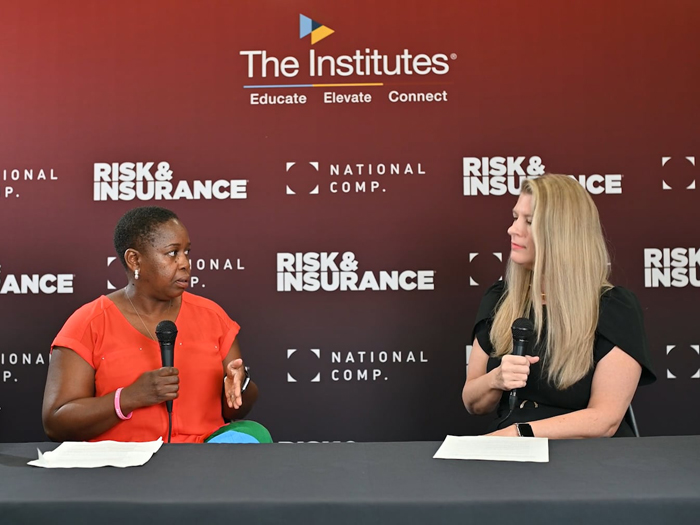7 Critical Risks Facing the Retail Industry

Retail can often serve as a bellwether industry. If the economy is booming, people are hitting the stores; if a recession is on the way, consumers and their wallets are staying at home because their couches are paid for.
The rise in e-commerce, activist product boycotts and an instability in international trade caused by Brexit and the U.S.’s trade war with China, make it even harder to predict how much risk the retail sector is exposed to.
In this rapidly changing environment, retailers need to be able to adapt to a whole new host of consumer demands while also juggling a tenuous supply chain and worsening storms. If they don’t adapt, they face having to shutter their stores.
Here are seven critical risks facing the retail sector:
1) Natural Catastrophes
For many insureds, property damage is one of the first issues that comes to mind after a natural disaster. Buildings can flood, catch fire or succumb to heavy winds. In 2017, insurers faced bills of $135 billion for damages caused by wildfires, hurricanes and earthquakes.
“A couple of years ago the hurricanes came through that really impacted the property insurance marketplace because for a long time it had not been pricing in those types of catastrophic events,” said Mac Nadel, U.S. retail wholesale, food and beverage practice leader, Marsh.
For retailers, damage to their warehouses and brick and mortar operations aren’t the only risk they have to worry about when natural disaster strikes. They also have to worry about product damage, business interruption and data loss.
As global climate change continues to increase the number of natural disasters that occur and their severity, retailers should brace themselves for major losses caused by both product and property damage.
“Most expectations are that the severe weather events that we’ve seen will only continue to increase in the years coming up,” Nadel said.
2) Supply Chain
Mounting tensions caused by America’s trade war with China, the looming threat of a no-deal Brexit and a rocky G7 summit are all causing global trade to seem increasingly unstable and retailers are facing a lot of uncertainty when it comes to the supply chain.
“It’s unlike anything we’ve seen,” Gabrielle Griffith, director at BPE Global, told Risk & Insurance®. “Free trade agreements being on hold, being redrafted — it’s all occurred before but never with as little guidance as we are being given at the moment.”
All of this uncertainty has created major anxiety for retailers.
British-run Domino’s stores are stockpiling pizza ingredients in case a no-deal Brexit prevents them from importing key items like frozen chicken and pineapple. Just the fear of the U.K. exiting without a deal has cost the company $8.5 million.
The trade war between the U.S. and China has sparked similar fears with dozens of retailers warning President Trump that tariffs could impact the supply chain and hurt retailers.
“Imposing tariffs to punish the originating country also damages US supply chains and puts these American jobs at risk,” Patrick Fox, senior director of customs and trade strategy for VF Corporation said during a public hearing on the tariffs. VF Corporations owns several popular retail brands, including Timberland and Vans.
“While we recognize the issues with China’s IP forged technology transfer practices, we ask ourselves if the cost of tariffs to US companies and consumers causes more harm than the problem they are trying to solve,” he continued.
3) Cyber Attacks
While recent media coverage of cyber attacks has focused on tech companies, retail companies remain a prime target for hackers.
Nearly every cyber security report released over the past few years has retail among the top industries for attacked organizations, according to Forbes. With e-commerce accounting for an ever-increasing amount of transactions, retailers are expected to become more vulnerable.
The fact that retailers are vulnerable to data breaches shouldn’t come as a surprise to anyone.
Many people remember the security breach that rocked Target in 2013. Hackers stole data from up to 40 million debit and credit cards, leaving the company with a mangled reputation and costing them $18.5 million in settlements paid to states affected by the breach.
Since then, retailers from Walmart to Home Depot have faced major cyber attacks and they come at a major cost to companies. Home Depot reported that their 2014 breach cost them $62 million, as reported by the New York Times.
Reputational risk and data theft aren’t the only risks that come with cyber attacks, however. Third party interruption losses can also occur if ransomware or malware infects a company’s computer system.
According to Nadel, these risks are only going to increase for retailers.
“The dependency of the retail industry on technology is only going to increase. So the exposure that you have, the vulnerability that you have to some sort of a hack will increase. That’s going to continue to be a big challenge,” he said.
4) A Decline in Consumer Spending
With consumers shouldering the costs of President Trump’s trade war with China and political pundits speculating that a recession may be on the horizon, retailers should add a decline in consumer spending to the list of risks facing their businesses.
According to the Washington Post, the latest round of tariffs will result in a price hike on everything from clothing and footwear to televisions and other electronics.
Consumers are likely to feel that money coming out of their wallets. JP Morgan Chase reports that the average American family will shoulder costs of about $1,000 per year as a result of the tariffs.
If these costs result in a decline in consumer spending, it could be disastrous for retailers, especially if they were struggling before the talks of a recession.
J.C. Penney has lost $196 million so far this year, causing their stock to trade at about 60 cents a share, according to the Washington Post.
National chains, including Payless ShoeSource, Gymboree and Things Remembered have filed for bankruptcy protection, citing declining sales as a major factor in their decline.
5) Product Boycotts
“Cancelled culture” and the rapid spread of activist movements on Twitter have made product boycotts a staple of modern American culture.
Target faced boycotts by the American Family Association after they announced that they would allow transgender customers to use the restroom that aligns with their gender identity.
A Starbucks boycott was sparked after the company announced they would hire refugees.
Joaquin Castro, the brother of Democratic presidential candidate Julian Castro, called on consumers to “reconsider where they spend their money” by boycotting businesses owned by Trump donors, the Texas Monthly reports.
And most recently Walmart is bracing for a boycott by the American Federation of Teachers for continuing to sell guns and one from the NRA for discontinuing the sales of specific ammunition types that are frequently used in assault weapons.
While boycotts don’t always gain enough traction to result in a drop in sales, many retailers still fear them — and they’re willing to drop products to end them.
Boycotts spurred by the #GrabYourWallet campaign, which calls for consumers to boycott all things Trump, and MoveOn.org caused retailers such as Macys, Nordstrom and Hudson Bay to drop all products associated with either the president or his family. Such products included First-Daughter and White House adviser Ivanka Trump’s fashion line, which she shut down last year.
Boycotts don’t appear to be going away anytime soon either. According to Nadel, consumers are becoming more educated and demanding, resulting in the need for quick business responses.
“It is no secret that social media has had and will continue to have a significant impact in the retail industry, for both the consumer and the retailer. Consumers are more educated than ever before and more connected to information that helps them find what they want, when they want it and for a price they are willing to pay. They are also able to connect themselves to a brand that aligns with their own lifestyle, beliefs and attitudes,” he said.
“Retailers also need to manage the risk associated with social media that can have a reputational impact, whether that is a dissatisfied customer, a product issue, or their consumer base reacting negatively to a new product line, changes within the company or concerns with what the company does or doesn’t stand for.”
This is especially true of millennials who, according to a CompareCards.com report, frequently decide to get political with their wallets. In the past year, one in three millennials participated in a product or company boycott.
6) Amazon
If you think online shopping is just a threat to brick and mortar stores, you’re wrong. Even big name retailers are struggling to grow their clientele in the face of online shopping giants like Amazon.
Nearly 74% of consumers turn to Amazon when they need to purchase a product and CNBC warns that statistic should keep retailers “up at night.” Overall, Amazon accounts for around 52% of the e-commerce market.
Many people also bypass search engines when they’re looking for a product and instead head directly to Amazon’s site.
The dominance of Amazon in the online shopping domain should be particularly concerning to retailers who are trying to grow their online business.
According to the Wall Street Journal, department stores like Macy’s, J.C. Penney’s and Nordstrom are investing money to expand their e-commerce sales with little success.
Luxury and beloved brand Barneys New York Inc. even filed bankruptcy after high New York City rents and declining apparel and online sales combined to create the perfect storm.
7) Talent Risk and the Aging Workforce
Nadel noted that one of the top issues retailers are concerned about is the aging workforce.
“As the population is getting older, that workforce is so much more susceptible to sprains and strains and so you may see a bit of an increase in workers’ compensation claims,” he said.
Workers’ compensation claims make up the bulk of insurance claims for retailers, according to Nadel, so an increase due to the aging workforce is no small concern.
“If you’re talking just a pure frequency and dollars I think that the leaders are still workers’ compensation claims, so employee injury,” he said.
Many people wouldn’t expect the aging workforce to be a major risk for retailers. Afterall, isn’t retail work the dominion of teenagers looking for an after school or summer paycheck?
Younger workers are shunning the workforce with an all-time low of 35% of teenagers working or looking for a job in summer 2017. This lack of talent hits retailers and fast-food companies particularly hard.
In 2018, the Bureau of Labor Statistics reported that there were 757,000 retail openings in July, up by 100,000 from the previous year.
This shortage of employees caused many retailers to up their game by offering benefits, like paid time off and 401(k) eligibility, that go beyond the traditional employee discount.
As for the future, changing economical and technological landscapes have had retailers treading water for quite some time; now it’s time to see who will survive the flood. &










